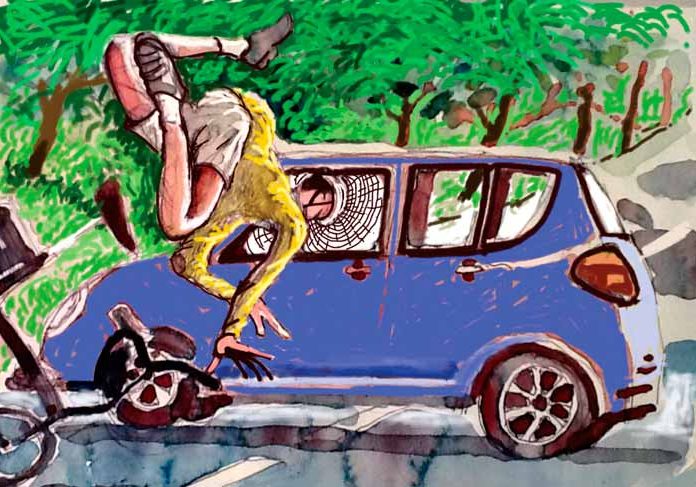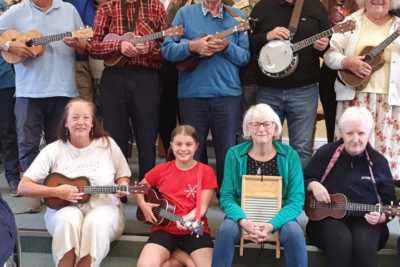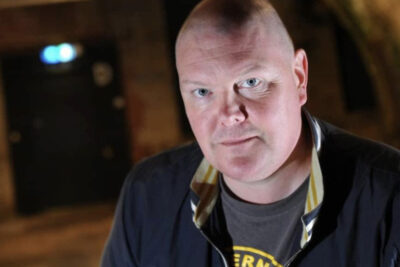
Road Wars?
by Northern Life
by Malcolm Redford
Having surrendered my driving licence because of a serious eye infection associated with the macular degeneration from which I suffer, my bicycle has become very important to me. Using it gives me the benefit of fitness, independence and that ‘extra something’ that all bike riders know so well.
Perhaps the easiest way to describe this is that the bike could be regarded as an ‘endorphin machine’. Endorphins (the chemicals the human body produces itself as a result of exercise) induce a feeling of wellbeing and satisfaction. Other ‘plusses’ complement this; among them is the pleasure of being able to get around for free! Then there is the knowledge that going out on a bike is improving your fitness as well as the pleasure of not being a hostage to traffic congestion.

The accident that left Malcolm in Royal Blackburn Hospital
There are down sides, of course. Weather cannot be relied on and, looking out of the window on a showery or cold day makes it easy to suddenly realise you might have better things to do! Steep hills may not be conducive to a ‘jolly jaunt’, as too much of this will quickly sap the body of the effects of its ‘endorphin rush’. Available time is another limit. To use your bike to commute to work
requires some organisation, remembering to take spare clothes, shoes, a towel and security locks etc. Heavy traffic can be intimidating, noisy, smelly and demoralising on a major road as a seemingly endless torrent of vehicles whooshes past.
This last aspect illustrates the ‘them and us’ conflict which was the subject of the programme ‘The War on Britain’s Roads’ featured on the BBC. Use was made of cyclists’ helmet-mounted video cameras to show some of their experiences. Watching these triggered memories of my own.
It was shocking to see how a large articulated lorry joined a roundabout when a cyclist was already negotiating his way around it. The cyclist had the right of way, but unfortunately the lorry driver didn’t see him. In an agonisingly slow second, the cyclist, now aware of his imminent danger, took evasive action and managed to stop, as the lorry’s massive bulk passed just inches in front of him. It continued on its way, still filmed by the stunned cyclist, oblivious of the near disaster it had nearly caused.
I remember I was just as shocked and breathless as on one occasion a few years ago, when the very same thing happened to me! I was on my recumbent, going to work. It was very early in the morning, and dark, but I had my lights on, a high visibility reflective jacket, a bright flag and there was not much traffic. I was in a prominent position and had the right of way. How could he really not see me?
Soon enough, however, the significance of my lucky escape paled in my mind. My confidence as a safe cyclist was not dimmed for long. After all, my inner voice said, ‘You can’t pre-empt such an extraordinary incident, so why be so nervous?’ So, some time later, having gone for a cycle along the Leeds-Liverpool canal looking for subjects to sketch, I was returning to my car, parked at the bottom of Carr Rd in Nelson. I remember going over the canal bridge at the top of the hill. My next memory is of my wife’s anxious face and my pretending not to recognise her (as I am a terrible tease), when I woke up in Royal Blackburn Hospital.
- A narrow escape for a cyclist
- A close encounter with a tanker
- The dangers of cycling on the pavement
At the same time as I was descending the hill (the last place I remember riding my bike) a car, driven by an old lady, was apparently coming up it, and turned right across my path. Her inadvertent timing was spot on! Her and my movement corresponded exactly, with the resultant, inevitable, collision. I still have no memory of it, but when the police saw her at her home, she said she remembered ‘a rock’ hitting her window. She thought it had been thrown by a hooligan and drove on, fearing she was being attacked. That ‘rock’ was my head!
I know that ‘trouble comes in threes’, and that some may say ‘What else would you expect, being partially-sighted?’ The thing is that the two incidents I have described so far occurred before the macular problems in my eye began. The third, which follows, is, thank God, the only one to have occurred since they began.
It being a Sunday afternoon, traffic was relatively light, but with this being a busy roundabout at the best of times, I took great care in how I went around it, making sure the road was clear, again signalling my intention to turn right and that my position on the road was correct. As I pedalled around the centre island, I saw a car coming up the hill towards me. I assumed he would stop to allow me past. I signalled again, to make my intention to turn off at the next exit obvious, but he did not stop! I signalled again and shouted ‘I’m turning left!’ I could not believe what was happening.
Not being able to cross his path, because by this time he was in the way, I hit him. My bike stopped, but of course, I didn’t, and before I knew it I was lying in a heap in the road.
The offending driver was mortified, and extremely apologetic. I bet you can guess what he said; ‘I didn’t see you!’ I was directly in front of the afternoon sun. He was blinded by it and was speaking the truth.
All of my examples have one common denominator; that the drivers of the vehicles involved are likely to have seen the cyclist, but this information did not appear to register with them. Perhaps the regular broadcast of short video clips like those shown on ‘The War on Britain’s Roads’ might help, both as a routine part of evening TV and as part of driver training. It would be good if both drivers and cyclists are helped to visualise the road environment from the other’s perspective. A large percentage of cyclists drive, just as many drivers cycle, but retaining the understanding this may give seems to easily vanish when taking on the other role.
Road safety also hinges on good behaviour also. It might appear from this piece that I think blame for the antagonism between motorists and cyclists lies with the motorist. While, inevitably, the cyclist is more likely to come off worse in an accident involving a motor vehicle, that is not the same as saying it is the motorist’s fault. The bad behaviour of some cyclists is familiar and appalling, including ignoring traffic lights on red, cycling without lights in the dark, cycling on pavements, not using a bell or warning others of their approach, riding down the wrong side of the road to skirt a traffic jam and not signalling or making intentions clear.
If further progress is made towards more co-operative road use, my visits to A and E could be less frequent in the future!








